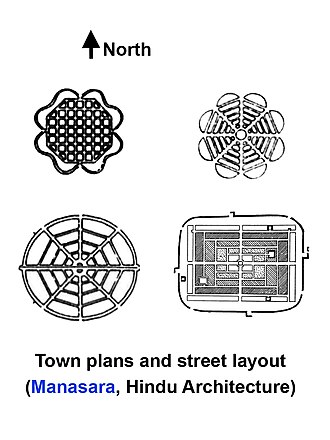
The Mānasāra, also known as Manasa or Manasara Shilpa Shastra, is an ancient Sanskrit treatise on Indian architecture and design.[4] Organized into 70 adhyayas (chapters) and 10,000 shlokas (verses),[5] it is one of many Hindu texts on Shilpa Shastra – science of arts and crafts – that once existed in 1st-millennium CE.[6] The Manasara is among the few on Ancient Indian architecture whose complete manuscripts have survived into the modern age. It is a treatise that provides detailed guidelines on the building of Hindu temples, sculptures, houses, gardens, water tanks, laying out of towns and other structures.[4][6]
- ^ Sinha 1998, pp. 27–40.
- ^ Ram Raz 1834.
- ^ Ernest Havell 1972, pp. 7–17.
- ^ a b Klaus K. Klostermaier (2014). A Concise Encyclopedia of Hinduism. Oneworld Publications, Oxford. p. 112. ISBN 978-1-78074-672-2.
- ^ Thakur, Renu (1994). "Urban hierarchies, typologies and classification in early medieval India: c. 750–1200". Urban History. 21 (1): 61–76. doi:10.1017/S0963926800010701. ISSN 1469-8706.
- ^ a b PK Acharya (2011). N. C. Panda (ed.). Architecture of Mānasāra: Text with English Translation and Critical Notes. Bharatiya Kala Prakashan (original publication: 1934 by Oxford University Press). pp. 1–7.
